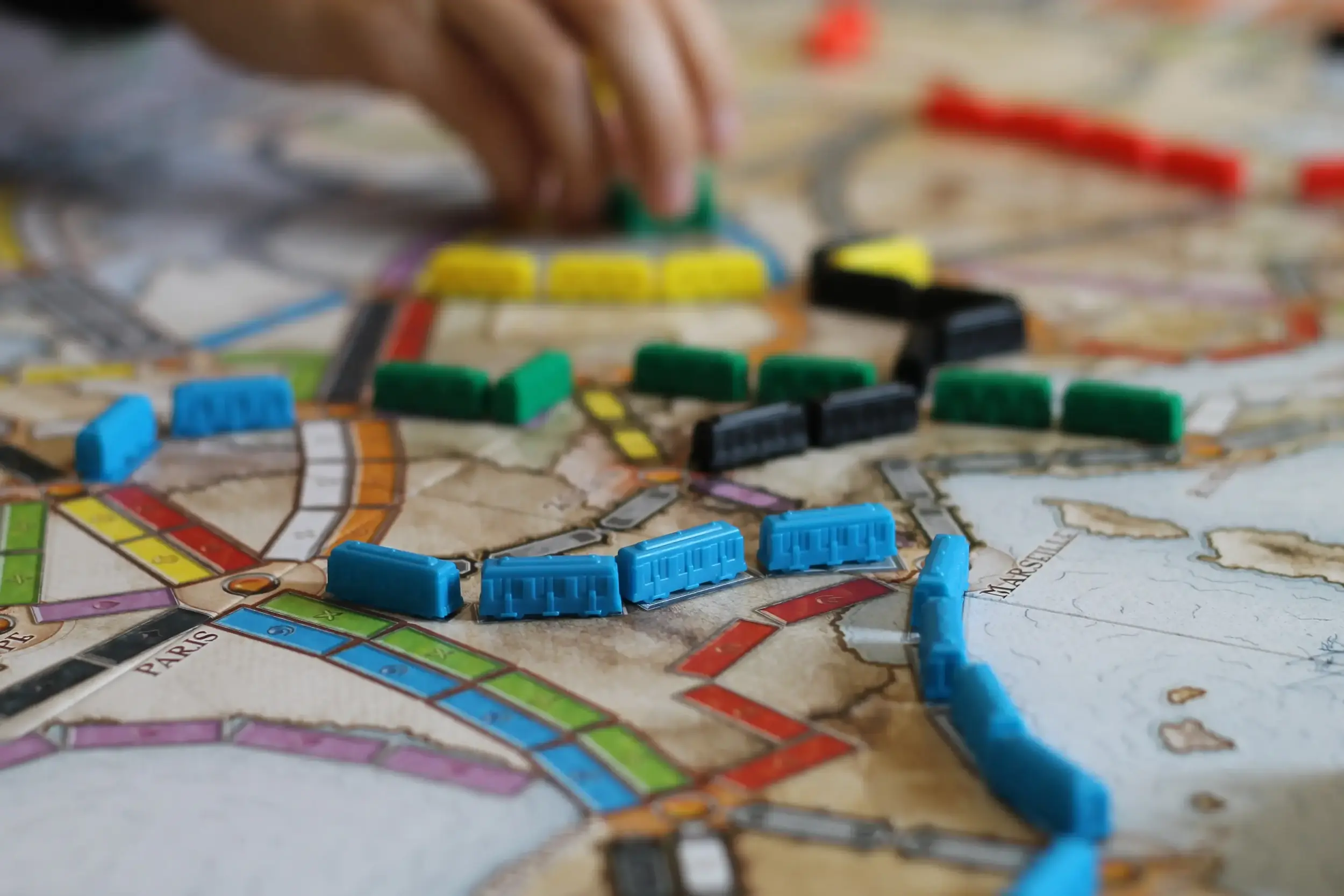To spur creativity in various spheres of life, game thinking is a potent strategy that blends game design, systems thinking, Agile/Lean UX, and design thinking. Individuals and companies may develop smarter, quicker, and more exciting products and services by putting the ideas of game thinking to use.
Understanding what drives people to interact with a product or service is the goal of game thinking. It entails thoughtful product design and in-depth consideration of the user experience. It is more probable that people will accept more interesting, efficient, and user-friendly goods when designed in a game-like manner.
Game thinking may help you promote creativity regardless of your role—whether you’re a product designer, marketer, or business owner. To produce items that provide outstanding results, take into account using a game thinking strategy.
Understanding Game Thinking

Game design, systems thinking, design thinking, and agile/lean methodologies are all components of the innovation framework known as “game thinking.” It is a method of approaching problem-solving that can promote intense involvement and quicker, more intelligent creativity. Individuals and organizations may develop more potent, informed, connected goods and experiences by applying game-thinking ideas to real-world problems.
Game thinking is fundamentally about comprehending the demands of your users or consumers and creating goods that effectively address those needs. This necessitates thoroughly comprehending the issue space or the area where the unmet demand resides. By comprehending the issue space, you may identify the main obstacles and possibilities that need to be overcome to develop a successful product.
The solution space, where your product or service resides, is another area where game thinking focuses. You can create interesting, simple, and rewarding experiences by developing your product with the end user in mind. A thorough grasp of game mechanics, including feedback loops, incentives, and challenges that may be leveraged to produce a more engaging user experience, is necessary for this.
By offering a systematic method of product creation, the game thinks may speed innovation, which is one of its main advantages. You may swiftly test hypotheses and iterate through the development process to produce a product that satisfies your clients’ expectations by breaking it down into smaller, more manageable processes. This can assist in lowering the danger while raising the likelihood of success.
How Game Thinking Influences Decision Making

Game thinking is a powerful tool that can drive innovation in many areas of life, including decision-making. By applying game thinking principles to decision-making, individuals can create a more strategic approach to problem-solving and achieve better outcomes. This section will explore the role of strategic thinking in games and how game thinking can influence decision-making.
The Role of Strategic Thinking in Games
Game thinking is fundamentally based on strategic thinking. Players in games must use strategy to accomplish their objectives and triumph. This entails studying the game board, foreseeing actions from other players, and making preparations.
The same guidelines may be used to make decisions in real life. People who think strategically can better predict possible events, evaluate their alternatives, and arrive to wise judgments.
Game Thinking and Problem-Solving
Game thinking may also be applied to solve issues. Players must come up with innovative strategies to overcome obstacles in games. Real-world issues can be approached using this methodology. People may break down challenges into smaller, more manageable pieces and develop creative solutions by approaching them as games.
Thinking of the issue as a puzzle is one technique to use game thought to solve a problem. People can divide the issue into smaller components and attempt to tackle each separately. By doing so, you can find the source of the issue and create a better solution.
Consider the issue as a strategic game as another technique to use game thinking in problem resolution. People may assess the situation, predict possible outcomes, and plan their actions based on that analysis. Doing so lets you find the optimal course of action and steer clear of hazards.
Applications of Game Thinking in Everyday Life

Game thinking is useful in all aspects of daily living, from career advancement to personal growth. People may develop problem-solving abilities, boost motivation, and accomplish goals more successfully by introducing game components.
Game Thinking in Personal Development
Personal abilities like time management, organization, and self-discipline may be developed through game thinking. People can, for instance, use habit-tracking software that offers rewards for performing daily chores like reading or exercising. People are likelier to persist with their goals and form new habits by including game components, such as points and incentives.
Another way game thinking can be applied in personal development is by using thinking games. Thinking games, such as “Thinking Things Game” or “What Am I Thinking Of Game,” can help individuals improve their cognitive abilities, such as memory, attention, and problem-solving skills. These games can be played alone or with others and can be a fun way to challenge oneself and improve mental agility.
Game Thinking in Professional Life
In the workplace, game thinking may boost productivity, creativity, and teamwork. For instance, businesses may utilize gamification to encourage staff to reach their objectives. Employee engagement and job motivation increase by including game features like incentives and leaderboards.
Game thinking may be employed in the workplace to promote innovation and creativity. For instance, businesses may promote idea-sharing and teamwork among staff by holding brainstorming sessions based on games. Businesses can foster more creativity and innovation by providing an enjoyable and secure environment for employees to share their ideas.
Additionally, game thinking may be applied to enhance cooperation and teamwork. Organizations may motivate staff to collaborate and accomplish shared objectives by introducing game features like team challenges and prizes. Better communication, collaboration, and overall team performance may result from this.
Game Thinking and Innovation

A potent tool, game thinking may spur creativity in various spheres of life, including business, education, and personal growth. Real-world issues may be solved by using game design ideas, which can help both individuals and organizations tap into their creativity.
How Game Thinking Drives Creativity
At its core, game thinking is all about engaging players meaningfully. By creating an experience that is fun, challenging, and rewarding, game designers can tap into players’ intrinsic motivation and drive engagement. This same principle can be applied to other areas of life, including creativity and innovation.
When individuals approach a problem with a game thinking mindset, they are more likely to be open to new ideas and approaches. They are also more likely to persist in facing challenges, as they are motivated to “win” or achieve a specific goal. This can lead to more creative solutions and a greater willingness to take risks.
Game Thinking in Business Innovation
Game thinking can potentially be a potent instrument for corporate innovation and growth. Companies may produce products that are more interesting, user-friendly, and likely to be successful in the market by using game design concepts.
“Player-centric design” is a crucial component of game thinking in business. This entails generating experiences that are catered to the customer’s requirements and preferences while keeping the consumer in mind when building products and services. Companies may produce goods that are more appealing and likely to be successful by doing this.
Data and analytics are a key components of game thinking in business. Companies may learn much about what is and isn’t working by monitoring user engagement and behaviour. This can assist them in refining and enhancing their goods over time, resulting in even greater success and expansion.
Conclusion
Success in any industry depends on invention, and game thinking is a potent tool for stimulating creativity. Game Thinking may speed up creativity and assist both individuals and companies in achieving their objectives by fusing game design, systems thinking, design thinking, and agile/lean approaches.
By using game thinking, people may come up with creative answers to issues, test those solutions on a small group of ardent, high-need early adopters, and use their investment to fine-tune their goods to the market’s demands. Through Game Thinking, people may increase their ability to think creatively and adapt to changing situations in their personal and professional lives.
Game Thinking is not just for programmers and game designers. Anyone may learn it and apply it to their daily life. Game Thinking may help you think more creatively, solve issues more effectively, and accomplish your objectives more quickly whether you run a business, educate, work in healthcare, or are a stay-at-home parent.
By incorporating Game Thinking into their lives, individuals can unlock their full potential and achieve success in whatever they set out to do. Whether you are thinking about the game, playing the game, or just trying to figure out what game you are thinking of, Game Thinking can help you drive innovation and achieve your goals.
What is game thinking?
Game thinking is an approach that combines game design, systems thinking, Agile/Lean UX, and design thinking to drive innovation in many aspects of life.
How can game thinking drive innovation?
Game thinking drives innovation by understanding what motivates people to engage with a product or service and designing enjoyable and effective products that lead to more engaging user experiences.
What elements are involved in game thinking?
Game thinking involves game design, systems thinking, Agile/Lean UX, and design thinking.
What are the benefits of applying game thinking?
The main benefits of applying game thinking are more brilliant, faster, more engaging products and services and increased user adoption.
How do I adopt a game-like approach to product design?
To adopt a game-like approach to product design, individuals and organizations should focus on deep thinking about the user experience to create enjoyable and effective products.


